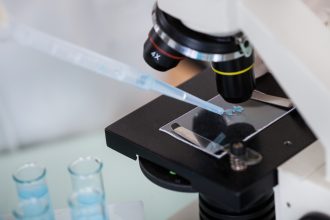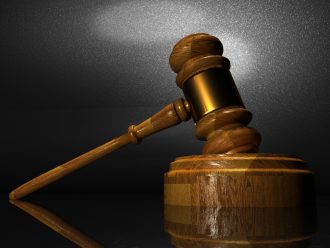
November 4, 2021
Failure in the Art Undermines any Reasonable Expectation of Success
In University of Strathclyde v. Clear-Vu Lighting LLC, [2020-2243], (November 4, 2021) the Federal Circuit reversed the PTAB’s determination that held unpatentable as obvious claims 1-4 of U.S. Patent No. 9,839,706, directed to photoinactivation of Methicillin-resistant Staphylococcus aureus (MRSA) and other Gram-positive bacteria without using a photosensitizing agent.
The Board determined that claims 1 and 3 of the ’706 patent would have been obvious over Ashkenazi in view of Nitzan, and that claims 2 and 4 would have been obvious in further view of Jones. (The names Ashkenazi, Nitzan, and Jones refer to scholarly articles.) The Board found that Ashkenazi and Nitzan teach or suggest all the limitations of claims 1 and 3,” and that a person of ordinary skill in the art would have been motivated to combine these two references and “would have had a reasonable expectation of successfully doing so.
On appeal, Strathclyde challenges the Board’s obviousness determination, arguing that the Board erred in finding that the combination of Ashkenazi and Nitzan teaches inactivating one or more Gram-positive bacteria without using a photosensitizer. It also asserts that the Board’s finding of a reasonable expectation of success is not supported by substantial evidence. Whether the prior art discloses a claim limitation, whether a skilled artisan would have been motivated to modify or combine teachings in the prior art, and whether she would have had a reasonable expectation of success in doing so are questions of fact.
The Federal Circuit said that both parties agreed that most of the limitations found in claims 1 and 3 are disclosed by Ashkenazi or Nitzan, and that the only dispute is whether these references teach inactivating one of the claimed Gram-positive bacteria without using a photosensitizer. The Federal Circuit found that the Board’s finding that this was taught by the combination of Ashkenazi and Nitzan is not supported by substantial evidence. The Federal Circuit said that all of Ashkenazi’s P. acnes cultures were grown in the presence of a photosensitizer—either riboflavin alone, or riboflavin together with ALA. The Federal Circuti found nothing in Ashkenazi that discloses or suggests inactivating P. acnes, or any other bacteria, without using a photosensitizer.
The Federal Circuit noted that while Nitzan provides an example in which MRSA and other bacteria were exposed to blue light without ALA or any other photosensitizer, there is no evidence that Nitzan successfully achieved inactivation under this condition. The Federal Circuit noted that in finding that Nitzan did not anticipate claims 1 and 3, the Board found Clear-Vu failed to establish that Nitzan’s non-ALA MRSA demonstrated “inactivation” as required by the claims.
The Federal Circuit said that given neither Ashkenazi nor Nitzan teaches or suggests inactivation of any bacteria without using a photosensitizer, it failed to see why a skilled artisan would opt to entirely omit a photosensitizer when combining these references. The Federal Circuit said that the Board articulated no rational basis—and it could discern none—for combining Ashkenazi’s P. acnes experiments, which at all times used a photosensitizer, with Nitzan’s non-ALA MRSA experiment, which did not achieve inactivation, to arrive at an embodiment in which MRSA is inactivated by exposing it to 407–420 nm blue light without
using a photosensitizer.
On this record, the Federal Circuit concluded that no reasonable fact finder could have found that the combination of Ashkenazi and Nitzan discloses inactivating one or more Gram-positive bacteria without using a photosensitizer.
Regarding whether there was a reasonable expectation of success, the Federal Circuit disagreed with the Board’s finding that a skilled artisan would have expected that MRSA could be inactivated by blue light without using a photosensitizer due to the presence of at least some amount of naturally produced porphyrin in the bacteria. The Federal Circuit said that the only support for the finding was “pure conjecture coupled with hindsight reliance on the teachings in the [challenged patent].”
The Federal Circuit said that the Board, relying on Ashkenazi’s teaching that “blue light may” inactivate “other bacterial cells that produce porphyrins,” reasoned that because light-activated porphyrin molecules were shown in Ashkenazi to cause inactivation for P. acnes (even though Ashkenazi’s experiments applied a photosensitizer), the fact that MRSA has some level of endogenous porphyrin suggests to a skilled artisan that MRSA, too, would exhibit some amount of inactivation after exposure to 407–420 nm blue light. But, the Federal Circuit said that there is simply no evidence of record at the time of the ’706 patent to support this assumption.
The Federal Circuit said that the evidence of record, Nitzan and an earlier publication by Nitzan, showed the opposite. The data Dr. Nitzan reported would have indicated to a person of ordinary skill in the art that those natural levels are insufficient to inactivate MRSA using 407–420 nm blue light without also using a photosensitizer.
Thus, the Federal Circuit found, not only is there a complete lack of evidence in the record that any bacteria were inactivated after exposure to 407–420 nm blue light without using a photosensitizer, there is also evidence showing that others had failed to inactivate MRSA—one of the claimed Gram-positive bacteria—without using a photosensitizer, despite experimenting with different light doses and different wavelength ranges of blue light.
The Federal Circuit reaffirmed that absolute predictability of success is not required, only a reasonable expectation. However in the present case, where the prior art evidences only failures to achieve that at which the inventors succeeded, no reasonable fact finder could find an expectation of success based on the teachings of that same prior art.




































